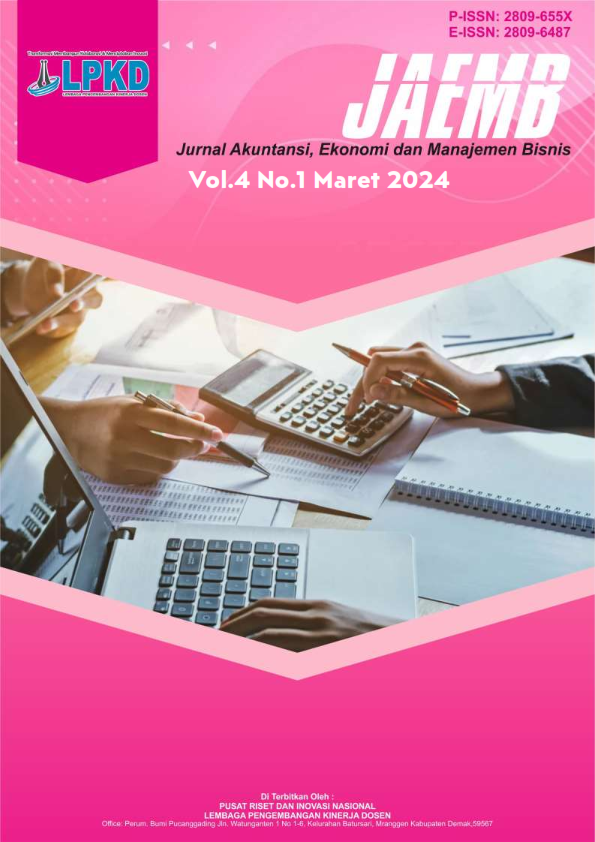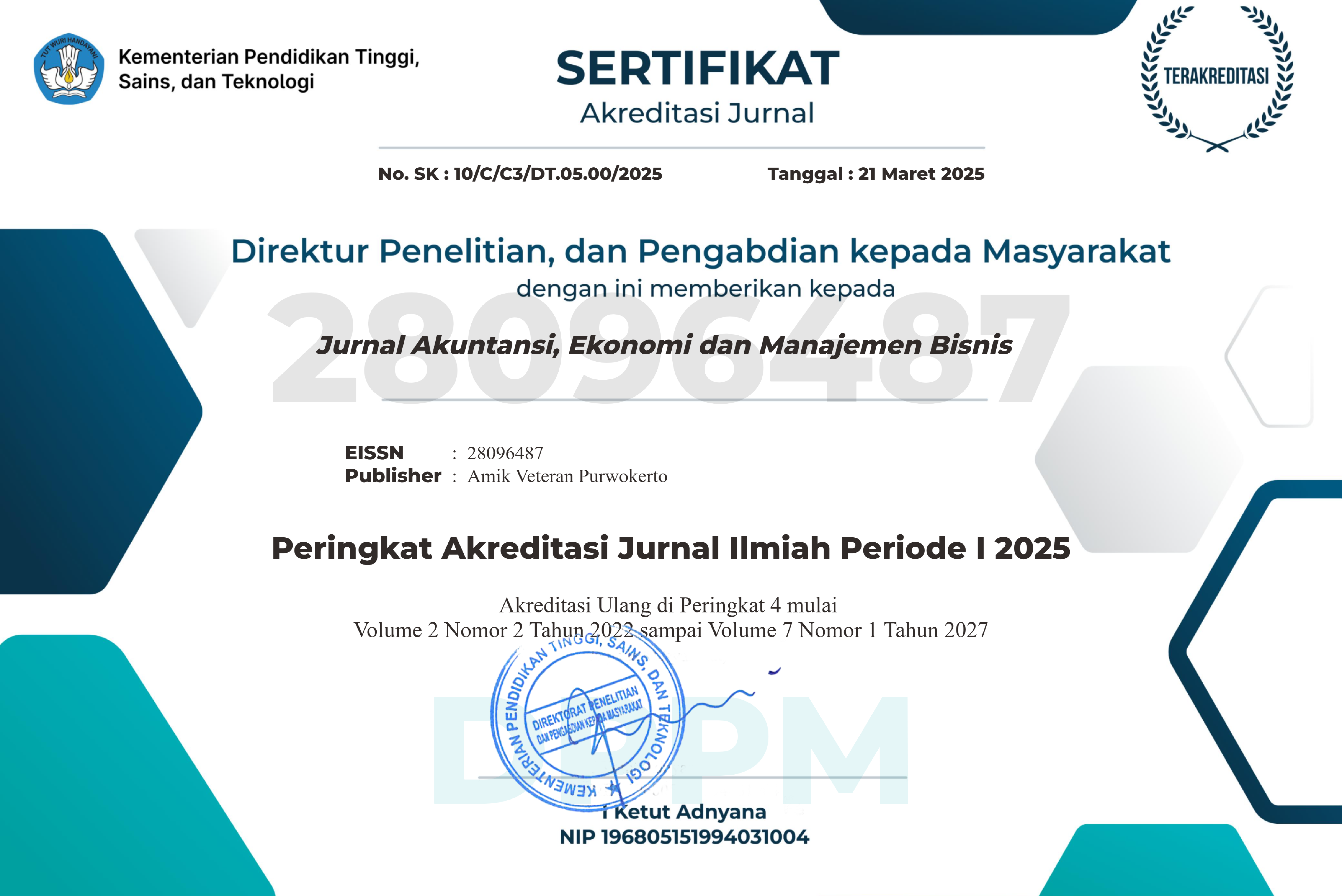Greening Career Pathways: A Policy Study on Green Human Resource Management and Its Impact on Young Talent Performance in Star-Rated Hotels in Semarang
DOI:
https://doi.org/10.55606/jaemb.v5i1.5803Keywords:
Green HRM, Career Development, Young Talent, Hospitality Industry, Environmental SustainabilityAbstract
This study investigates the application of Green Human Resource Management (Green HRM) policies and practices within star-rated hotels in Semarang, Indonesia, and explores their influence on the performance and career progression of young professionals. Employing a qualitative methodology through a case study approach, data were collected from five star-rated hotels, with participants comprising HR managers, environmental supervisors, and early-career employees. The findings reveal that all five dimensions of Green HRM are being implemented across the sampled hotels, though with varying levels of intensity and consistency. The adoption of Green HRM practices positively contributes to organizational performance, particularly in enhancing operational efficiency, corporate image, regulatory compliance, and innovation in service delivery. For young talents, the integration of Green HRM fosters increased motivation, skill development, job satisfaction, and managerial recognition. Furthermore, Green HRM practices support career advancement by facilitating entry into environmental specialist roles, strengthening competitiveness in the labor market, accelerating promotion trajectories, and expanding professional networks. However, challenges in implementation persist, including constrained resources, organizational inertia, limited environmental expertise, and the absence of standardized performance metrics. This research contributes to the theoretical enrichment of Green HRM literature, particularly within the hospitality sector in emerging economies, and offers practical insights for both hotel practitioners and aspiring professionals.
References
[[1] P. Pradono, S. Sugiyantoro, and A. Manaf, “The economic impact of international tourism to overcome the COVID-19 pandemic crisis in Indonesia,” in IOP Conference Series: Earth and Environmental Science, 2021, p. 12038. doi: 10.1088/1755-1315/738/1/012038.
[2] N. M. D. Suastiwi, “Pendidikan untuk Pariwisata Berkelanjutan dan Tanggung Jawab Sosial Perusahaan Perhotelan di Bali,” Widya Parahita, vol. 1, no. 2, pp. 76–85, 2019.
[3] H. Han, J. S. Lee, H. L. T. Trang, and W. Kim, “Water conservation and waste reduction management for increasing guest loyalty and green hotel practices,” Int. J. Hosp. Manag., vol. 75, pp. 58–66, 2018, doi: 10.1016/j.ijhm.2018.03.012.
[4] Deloitte, “The Deloitte Global 2023 Gen Z and Millennial Survey,” 2023. [Online]. Available: https://www2.deloitte.com/global/en/pages/about-deloitte/articles/genzmillennialsurvey.html
[5] Y. Gao, D. Zhang, and Y. Huo, “Corporate social responsibility and work engagement: A moderated mediation model,” Hum. Resour. Manage., vol. 61, no. 5, pp. 597–610, 2022, doi: 10.1002/hrm.22104.
[6] S. Ren, G. Tang, and S. E. Jackson, “Green human resource management research in emergence: A review and future directions.,” Asia Pacific J. Manag., vol. 35, 2018.
[7] N. T. Pham, T. Vo Thanh, Z. Tučková, and V. T. N. Thuy, “The role of green human resource management in driving hotel’s environmental performance: Interaction and mediation analysis,” Int. J. Hosp. Manag., vol. 88, 2020, doi: 10.1016/j.ijhm.2019.102392.
[8] N. T. Pham, Z. Tučková, and C. J. C. Jabbour, “A. Greening the hospitality industry: How do green human resource management practices influence organizational citizenship behavior in hotels? A mixed-methods study,” Tour. Manag., vol. 72, pp. 386–399, 2019, doi: 10.1016/j.tourman.2018.12.008.
[9] Y. M. Yusoff, M. Nejati, D. M. H. Kee, and A. Amran, “Linking green human resource management practices to environmental performance in hotel industry,” Glob. Bus. Rev., vol. 21, 2020.
[10] S. K. Singh, M. Del Giudice, R. Chierici, and D. Graziano, “Green innovation and environmental performance: The role of green transformational leadership and green human resource management,” Technol. Forecast. Soc. Change, vol. 150, p. 119762, 2020, doi: 10.1016/j.techfore.2019.119762.
[11] Y. J. Kim, W. G. Kim, H. M. Choi, and K. Phetvaroon, “The effect of green human resource management on hotel employees’ eco-friendly behavior and environmental performance,” Int. J. Hosp. Manag., vol. 76, pp. 83–93, 2019, doi: 10.1016/j.ijhm.2018.04.007.
[12] J. Shen, J. Dumont, and X. Deng, “Employees’ perceptions of green HRM and non-green employee work outcomes: The social identity and stakeholder perspectives,” Gr. Organ. Manag., vol. 43, no. 4, pp. 594–622, 2018, doi: 10.1177/1059601116664610.
[13] D. Palupiningtyas, R. Mulatsih, and A. S. Sumantri, “The role of green HRM in talent management development to improve employee performance in hospitality companies.,” Int. J. Econ. Manag. Res., vol. 3, 2024.
[14] S. K. Mousa and M. Othman, “The impact of green human resource management practices on sustainable performance in healthcare organisations: A conceptual framework,” J. Clean. Prod., vol. 243, p. 118595, 2020, doi: 10.1016/j.jclepro.2019.118595.
[15] Z. F. Marimin, S. H. Utomo, S. Nurminarsih, and Y. N. Ekawati, “Environmental management accounting implementation in the hotel business: Barriers and challenges,” Int. J. Energy Econ. Policy, vol. 8, no. 3, pp. 55–61, 2018.
[16] H. Maimon, “Talent Management and Employee Performance: A Quantitative Assessment during the COVID-19 Pandemic,” J. Dev. Soc. Sci., vol. 3, no. IV, pp. 42–53, 2022.
[17] J. W. Creswell and C. N. Poth, Qualitative inquiry and research design: Choosing among five approaches. SAGE Publications, 2018.
[18] R. K. Yin, Case study research and applications: Design and methods, 6th ed. Sage Publications, 2018. doi: 10.1177/1094428105279969.
[19] E. Eizenberg and Y. Jabareen, “Social sustainability: A new conceptual framework,” Sustainability, vol. 9, no. 1, p. 68, 2017, doi: 10.3390/su9010068.
[20] L. A. Palinkas, S. M. Horwitz, C. A. Green, J. P. Wisdom, N. Duan, and K. Hoagwood, “Purposeful sampling for qualitative data collection and analysis in mixed method implementation research,” Adm. Policy Ment. Heal. Ment. Heal. Serv. Res., vol. 42, no. 5, pp. 533–544, 2015, doi: 10.1007/s10488-013-0528-y.
[21] L. Birt, S. Scott, D. Cavers, C. Campbell, and F. Walter, “Member checking: A tool to enhance trustworthiness or merely a nod to validation?,” Qual. Health Res., vol. 26, no. 13, pp. 1802–1811, 2016, doi: 10.1177/1049732316654870.
[22] V. Braun and V. Clarke, “Reflecting on reflexive thematic analysis,” Qual. Res. Sport. Exerc. Heal., vol. 11, no. 4, pp. 589–597, 2019, doi: 10.1080/2159676X.2019.1628806.
[23] I. Korstjens and A. Moser, “Series: Practical guidance to qualitative research. Part 4: Trustworthiness and publishing,” Eur. J. Gen. Pract., vol. 24, no. 1, pp. 120–124, 2018, doi: 10.1080/13814788.2017.1375092.
[24] D. W. Renwick, C. J. Jabbour, M. Muller-Camen, T. Redman, and A. Wilkinson, “Contemporary developments in Green HRM scholarship,” Int. J. Hum. Resour. Manag., vol. 27, no. 2, pp. 114–128, 2016, doi: 10.1080/09585192.2015.1105844.
[25] F. Kravariti and K. Johnston, “Talent management: A critical literature review and research agenda for public sector human resource management,” Public Manag. Rev., vol. 22, no. 1, pp. 75–95, 2020, doi: 10.1080/14719037.2019.1638439.
[26] G. A. Bowen, “Document analysis as a qualitative research method,” Qual. Res. J., vol. 9, no. 2, pp. 27–40, 2009, doi: 10.3316/QRJ0902027.
[27] H. Noble and R. Heale, “Triangulation in research, with examples,” Evid. Based Nurs., vol. 22, no. 3, pp. 67–68, 2019, doi: 10.1136/ebnurs-2019-103145.
[28] D. Palupiningtyas, “Green human resource management: A comprehensive analysis of practices, impacts, and future directions,” Proceeding Int. Conf. Digit. Adv. Tour. Manag. Technol., vol. 1, 2023.
[29] C. S. Robins and K. Eisen, “Strategies for the effective use of NVivo in a large-scale study: Qualitative analysis and the repeal of Don’t Ask, Don’t Tell,” Qual. Inq., vol. 23, no. 10, pp. 768–778, 2017, doi: 10.1177/1077800417731089.
Downloads
Published
How to Cite
Issue
Section
License
Copyright (c) 2025 Jurnal Akuntansi, Ekonomi dan Manajemen Bisnis

This work is licensed under a Creative Commons Attribution-ShareAlike 4.0 International License.








